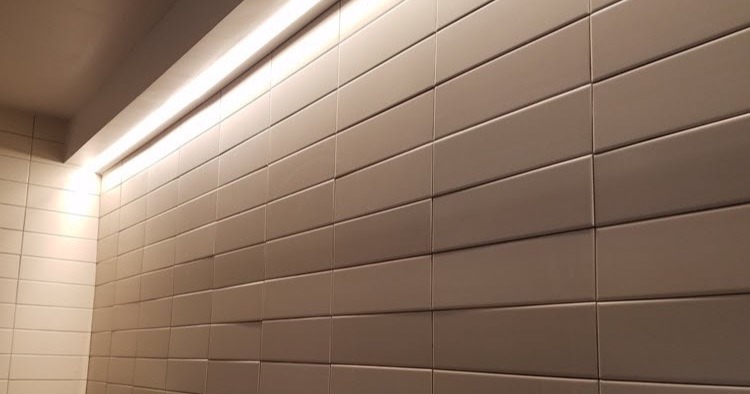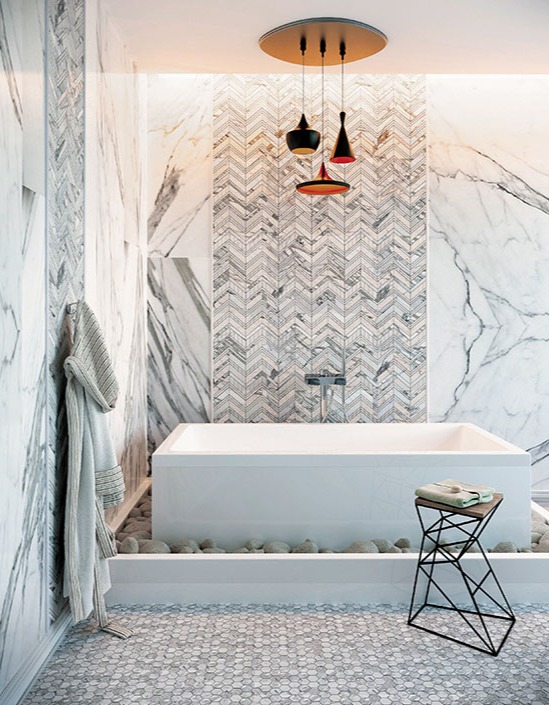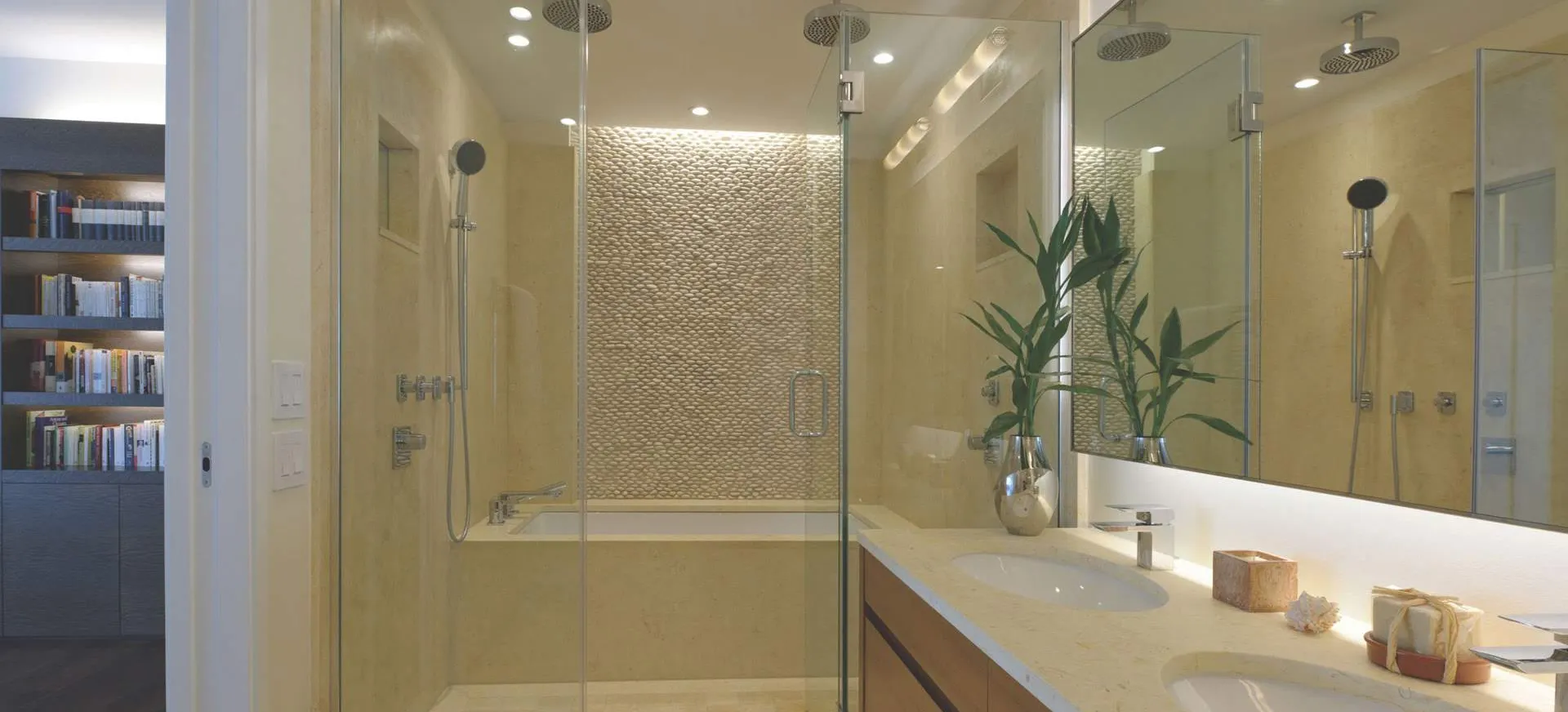Lighting and Tile
Lighting up your masterpiece is an excellent idea. Knowing how to make sure it looks like a masterpiece requires a bit of know-how. Some things to consider. Read more about lighting techniques in our TilePro Blog.
PROBLEMS

Lighting directed up or down (Graze lighting) on or near tile walls accentuates irregularities by casting shadows on the tile surface joints also referred to as "Lippage". Read more about lippage risks here.
The appearance of a tile installation is especially affected by critical lighting due to the small individual units, such as 2'' x 2'' tile sizes, and the practical tolerances allowed in the manufacturing and installation of tile.
Critical lighting problems occur when the tile wall is bathed in vertical light from the ceiling directly over the wall.
Critical lighting problems also occur when outside natural light, through windows and doors, casts shadows from slightly irregular tile surfaces.
Small die release lines inherent on the edges of some ceramic mosaic tiles, rarely noticeable when installed under normal lighting conditions, can produce large shadows from wash-wall lighting.
Thin-set mortar installations over masonry walls with critical lighting produce an almost impossible condition for shadow-free walls.
PREVENTIONS
Locate light fixtures at least 24 inches away from the wall; preferably in the center of the room.
Use larger format wall tile over the use of smaller format mosaic tile where wall lighting is necessary.
Requiring smooth, flat wall or floor surfaces within ANSI standards’ tolerances will reduce the shadows.
Installing the permanent lights prior to the tile installation will allow the tile installer to make some adjustments during the installation.
Changing the thin-bed installation to a mortar bed installation with the tile installed while the bed is soft will reduce installation shadows, but will not eliminate the shadows produced by the irregularities in the manufactured tile.

TIPS FOR THE CONTRACTOR
Recommend that the lighting be moved at least 24 inches from the wall; and preferably to the center of the room.
Instruct the contractor and other trades that the strict adherence to ANSI or TCNA preparation and tolerance requirements for walls or slabs be strictly adhered to and provide a copy of the requirements.
Have the permanent lights installed before the tile installation, or place your temporary lights directly above the tile installation.
Use tile from manufacturers who meet high standards of mounting, uniform thickness, and warpage control.
Recommend the use of larger format wall tile or floor tile over the use of smaller format mosaic tile on critical lighting walls or floors.
Where wall-wash lighting effects are desired, inspect the subsurface thoroughly prior to installation and require the responsible party to prepare the surface using the appropriate ANSI substrate preparation and installation procedure for your specific substrate. For best results, mortar beds should still be flexible during the installation of tiles. Don’t buy the contractor’s or other trades’ problems.
Give proper orientation to the tile installers and emphasize the high-risk aspect of the installation, and make an early inspection of the installation using light directly against the tile.
Use large beating block and properly “beat-in” tile.
On multi-room jobs, have the architect inspect the first tiled and grouted wall.
Learn from the pros at Coverings

